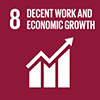Description/achievement of initiative
An important element in work on eco‐cycles is sustainable waste management.
Source: UNCSD Secretariat (2010) Questionnaire for the Member States on Experiences, Success Factors, Risks and Challenges with Regard to Objective and Themes of UN Conference on Sustainable Development (UNCSD)
Eco Cycle strategy is aimed at bringing about a society with non-toxic and resource-efficient cycles. This includes prevention of waste, changed patterns of consumption, more efficient production methods and waste management with a greater focus on recycling. The natural cycle strategy looks at materials and products throughout their lifecycle in order to provide as complete a picture as possible of their environmental impact. Consumption of energy for a product also has to be weighed into the assessment. Sweden considers it necessary for the volume of waste to decrease if we are to come close to sustainable management of waste. Producers must already take account of a product's environmental impact in a lifecycle perspective when it is manufactured. Design and material selection, as well as energy consumption in manufacturing and use must be taken into account. In addition, sustainable cycles can only be achieved if a greater proportion of waste can be reused and recycled. This saves both materials and energy, while also reducing the use of hazardous chemicals and environmental problems in waste management.
Implementation methodologies
Arrangements for Capacity-Building and Technology Transfer
Coordination mechanisms/governance structure
Partner(s)

